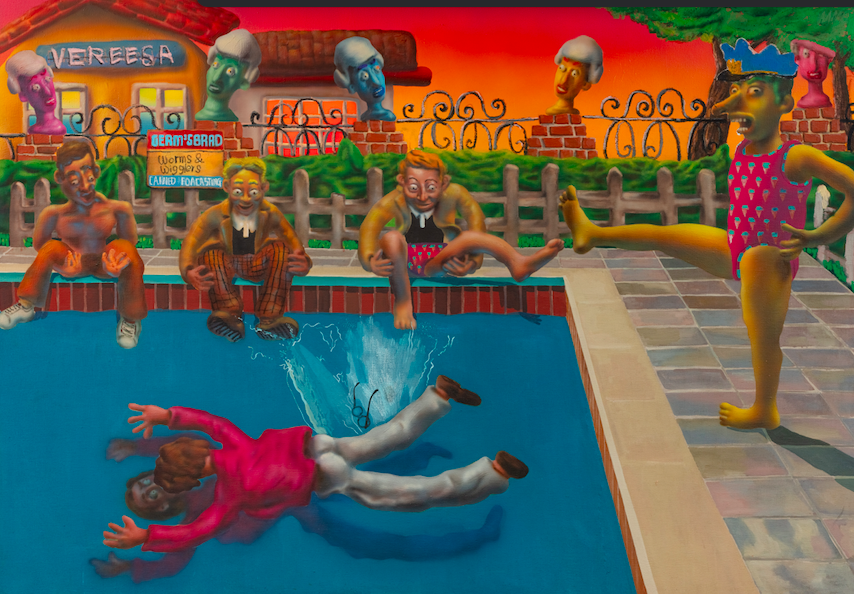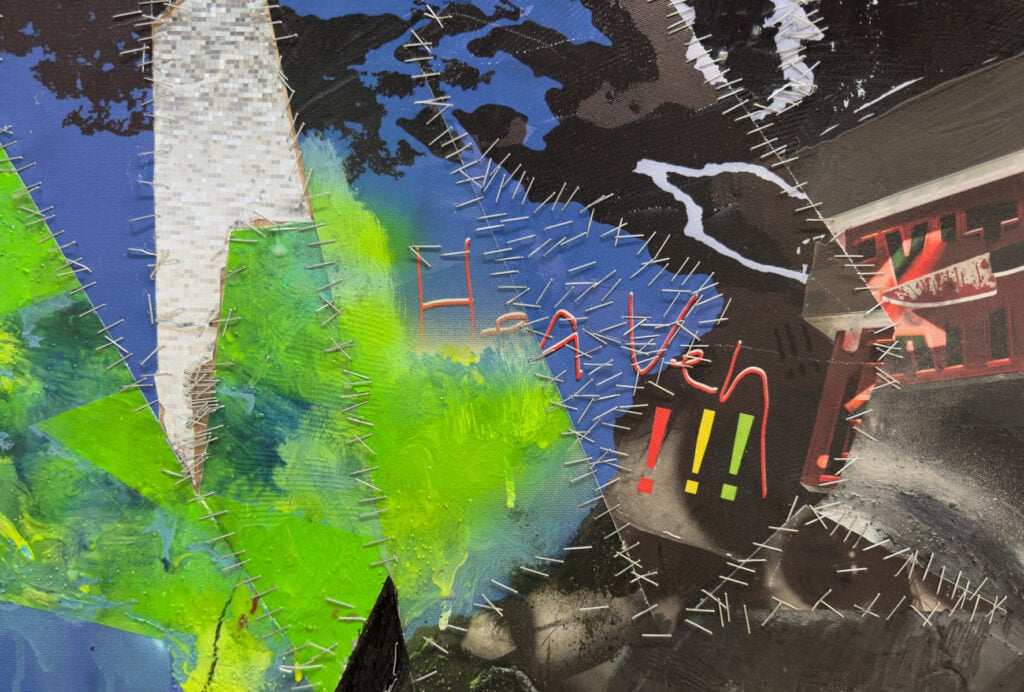
- This event has passed.
EVENT DESCRIPTION
The idea that art is the material manifestation of human spiritual freedom was one of the founding beliefs of the Gutai Art Association, a pioneering post-war avant-garde group which was formed in 1954 under the leadership of painter Jiro Yoshihara in Ashiya, Japan. Yoshihara instructed the member artists to create new work with the mantra, “Do what no one has done before!”
Axel Vervoordt Gallery is pleased to present this focus exhibition examining Ryuji Tanaka’s oeuvre by revealing the artist’s boundary-pushing material explorations incorporated within his traditional Nihon-ga techniques to ultimately express the beauty of nature through abstractions. Alongside Tanaka’s works from the late 1950s until the 1990s, Kazuo Shiraga’s painting, Kanemitsu (1961) is on view, elaborating a greater context of Gutai and the artist’s enduring connections.
Kazuo Shiraga (1924-2008) was one of Gutai’s prominent members and often encouraged his friend, Ryuji Tanaka (1927 – 2014), to join as well, which he did in 1965. Shiraga was three years older than Tanaka, but the two artists were from the same prefecture and both graduated from the Kyoto Municipal Special School of Painting, majoring in Nihon-ga (traditional Japanese painting). Although Shiraga switched his practice from Nihon-ga to oil painting for his pursuit of action panting, he had always witnessed Tanaka’s impeccable ways of expressing abstractions using Nihon-ga materials such as mineral pigment and ink. After joining the Gutai group, Tanaka enjoyed international recognition, with Michel Tapié, Clement Greenberg, and Robert Rauschenberg as visitors to Osaka, where the Gutai group shared a gallery space.
In this presentation, works on canvas and on paper stand out for their specific form and size, the alternance of dark and light tones and the use of natural materials while offering an overview of Tanaka’s qualities. His long search for the possibilities of abstraction results in works whose surface almost seems to float: the glistening of the ores and minerals change with every view. Under the sparkle, which radiates like a glow over the work, surprising colours of deep blue, bright green or warm red can be seen, as well as numerous other colours that take the viewer along in the artist’s exploration.
Tanaka’s monumental work, Kishi no Fudo (騎士の風土, 1967), may be translated as “The Nature of the Knight”. Fudo can be transcribed as “Nature” in English, but the origin of the word is a term for the climate, geology, and scenery of a certain region with a strong emphasis on a sense of locality. As an artist whose life thrived in the Kansai region, Tanaka had great dignity presenting his pride and expressing his motherland’s natural beauty through his abstractions. It’s a beauty of the unknown that Tanaka chose the word Kishi (Knight), instead of samurai but it’s quite fascinating for spectators to discover Tanaka’s spirituality as a samurai warrior during the painting’s execution. Exquisite, yet precise sword slashes present in the middle of the painting create a certain stream against the strong current of the wind in the textural background and rich red colour. Tanaka’s colour palette in the 1960s was rather dark and sedate, hence, it’s desirable to find the emotive power expressed in the red, showing a strong determination that can be implied artist’s high spirituality through the act of painting.
In the similar manner, Shiraga’s painting Kanemitsu, (兼光, 1961) intensively shows the fusion of a spiritual act with the physical body. Kanemitsu’s title is taken from Bizen Osafune Kanemitsu, a legendary swordsmith of Nanbokucho Period (1337 -1392). Kanemitsu’s swords are considered as masterpieces with great historical and artistic importance. The painting could also refer to a specific fabled Samurai sword, the Takemata no Kanemitsu, which has a blade of such supreme sharpness that it could cut iron armour into clean halves. The pursuit of higher performance resulted in the purification of forms and attitude, thence revealing the elegant and wild soul of Kanemitsu. The work is a powerful example of the artist’s physical disciplines and his search for spiritual transcendence. Ferocious movement using his feet and body as a tool shows traces of action carried out with speed. It creates a dynamic and heavily textured effect that is tinged with violence, yet the evocative movements show a unique quality of the artist’s ability to challenge the canvas.
Fundamental notions of individualism and democracy were introduced to Japanese society in the post-war era and that’s how Gutai’s manifest was established and permeated among Gutai artists. Although both Tanaka and Shiraga were individuals grappling with the collective trauma of World War II, they were never afraid of diving into the immersive and new beginning of the society with a full body of hope and spontaneity. Tanaka was the one and only Gutai artist who used Nihon-ga materials to express the beauty of nature through his abstractions, and he continued to cultivate freeing himself from conventions and dogmas, always in search of his own style of expression throughout his career. Shiraga’s artistic achievement and establishment of performative paintings renewed the interest of Japan’s post-war art movement by western countries from the 1960s until today. During their lifetimes, Tanaka and Shiraga continued to grow their artistic and personal bonds in the way that it was conducive to their mutual influence. Axel Vervoordt Gallery is pleased to present the works of these two pioneering artists together.
Details
- Start:
- 2 April 2022
- End:
- 14 May 2022
- Admission:
- Free
- Event Category:
- Painting


